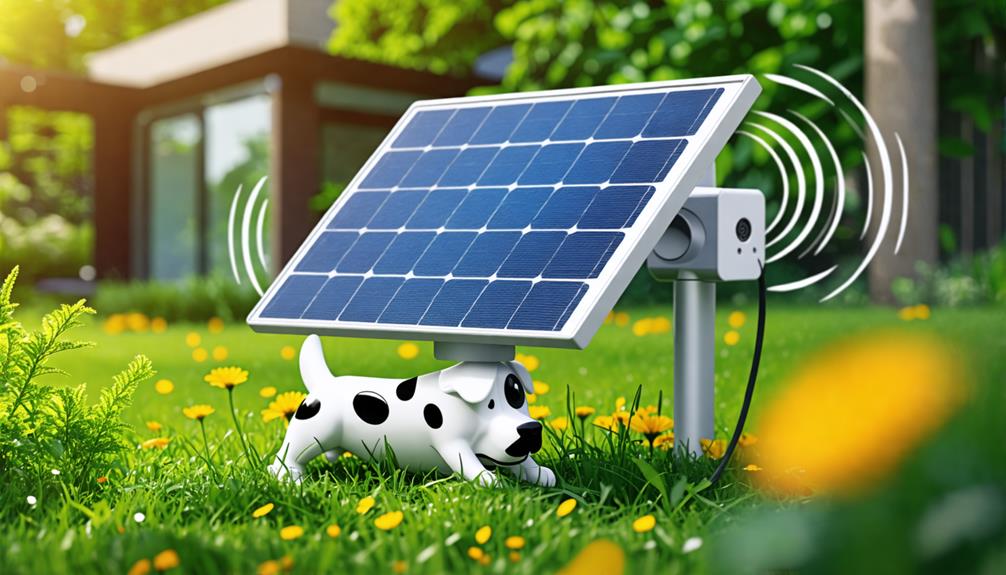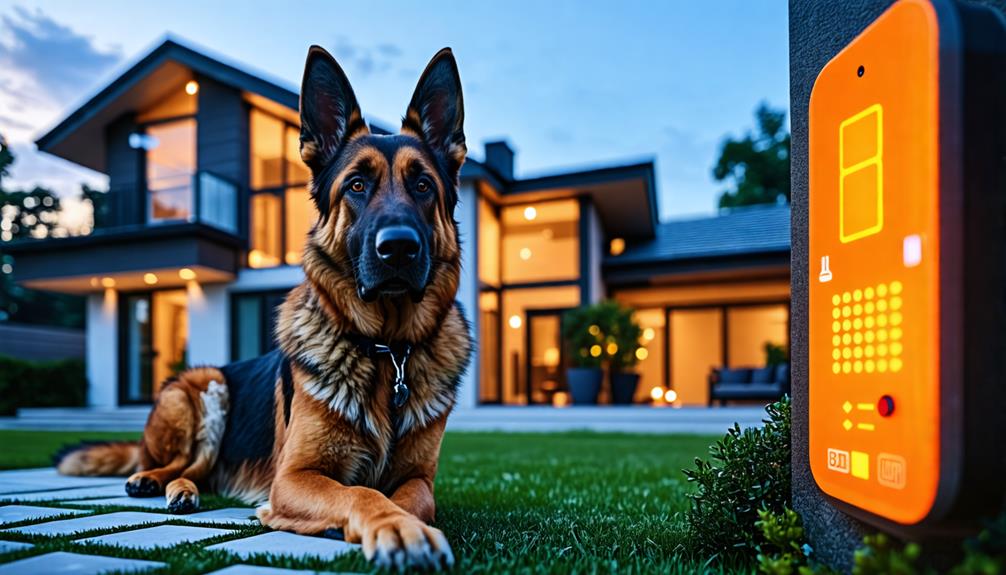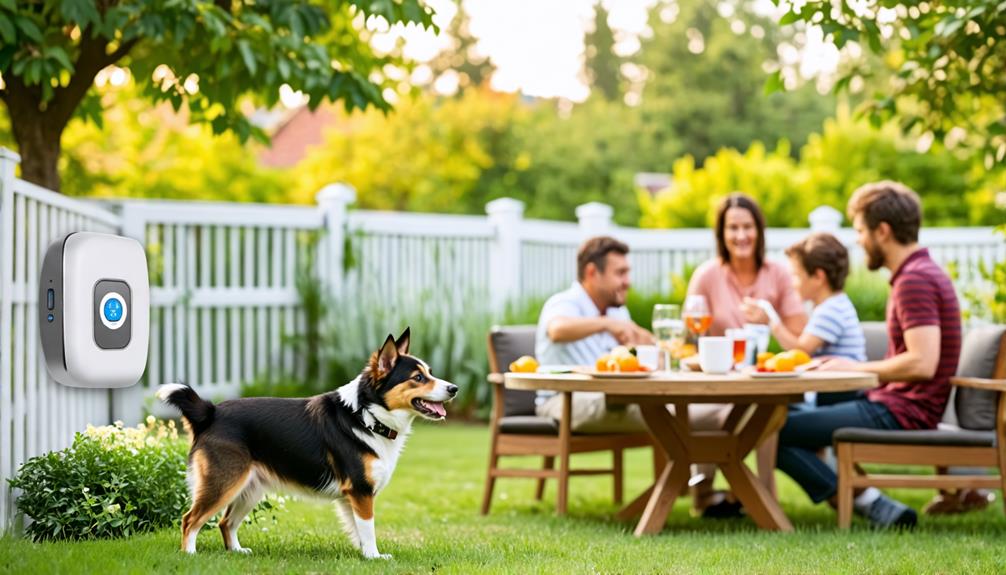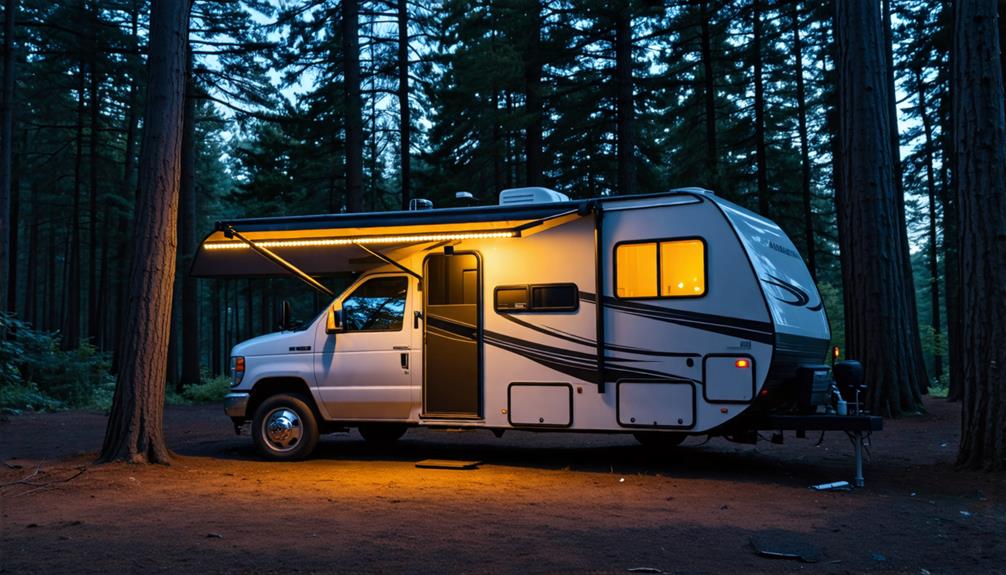
Brainstorm Security Shop

For Orders Over $199

On Any Of Our Products

Details On Refund Page
Have you ever considered enhancing your RV’s security with a barking dog alarm? These devices are not just about blaring noises; they cleverly use the familiar sound of a dog’s bark to deter unwelcome visitors. They’re equipped with sensors that can differentiate between ordinary campground noises and potential threats, activating only when truly necessary. You might be wondering how effective these alarms are in a real-world scenario, or perhaps how they stand up against other security options. Let’s explore the advantages and possible limitations, and you might find yourself surprised by their capabilities and versatility in keeping your RV safe.
A barking dog alarm, essentially a security device, mimics the sound of a barking dog when triggered. It’s designed to deter intruders by making them think you’ve got a protective dog on the premises.
You might wonder what exactly sets off these alarms. The answer lies in the barking triggers, which are typically movements or sounds that the device detects through sensors.
These alarms are equipped with varying levels of sensitivity. This means you can adjust how responsive the device is to potential threats. If you set the sensitivity high, even the slightest movement could trigger the barking, which is ideal if you’re in a particularly isolated area.
However, in a bustling RV park, you might lower the sensitivity to avoid false alarms caused by nearby foot traffic or wildlife.
It’s important to find a balance in the alarm’s sensitivity settings to ensure it provides both security and convenience. Too sensitive, and you’ll be dealing with frequent, unnecessary alerts. Too dull, and you might miss a genuine threat.
Adjusting the sensitivity according to your environment is key to making the most of your barking dog alarm.
Equipped with advanced sensors, barking dog alarms detect motion or noise, promptly reacting by emitting a loud, lifelike bark. This cutting-edge alarm technology mimics real dog behavior, making it seem like you’ve got a vigilant canine on duty.
When someone approaches your RV, the sensors trigger, and the alarm assesses the level of threat. If the movement persists or intensifies, the barking escalates in volume and frequency, mimicking an actual dog’s reaction to an intruder.
You’ll find these alarms incredibly easy to set up. Typically, they require minimal installation—just a matter of placing sensors strategically around your RV. These devices can differentiate between benign movements, such as a branch swaying, and more deliberate, suspicious motions like someone attempting to open a door.
The core of this technology lies in its ability to adapt. The sensors are fine-tuned to avoid false alarms, learning from the environment to distinguish normal from potentially threatening disturbances.
This smart adaptation helps in reducing unnecessary stress and maintaining the alarm’s effectiveness without your intervention. So, you’re not just installing an alarm; you’re setting up a smart, responsive guard that adapts to protect you.
Offering more than just security, barking dog alarms provide peace of mind wherever you park your RV. These innovative devices are designed to mimic the sound of a barking dog, creating an effective deterrent against potential intruders. You don’t have to worry about the complexities of handling a real pet, yet you enjoy the protective aura a dog naturally brings.
The barking deterrent effectiveness of these alarms is remarkable. Would-be thieves or intruders are typically startled by the sudden noise, believing that a real dog is on the premises. This assumption alone can deter them from proceeding with any malicious intent. It’s a simple yet highly effective way to keep your RV and its contents safe.
Moreover, there are significant pet safety benefits. By using a barking dog alarm, you avoid the risks associated with having a real dog guard your vehicle. There’s no concern about your pet facing any danger or discomfort during confrontations.
Additionally, you’re spared the ongoing costs and responsibilities of pet care while traveling. This setup ensures you can relax and enjoy your adventures without compromise, knowing your RV is well protected by your new ‘digital watchdog’.
While considering a barking dog alarm for your RV, it’s important to focus on certain key features that maximize both effectiveness and convenience.
Here are some crucial aspects you’ll want to keep in mind:
Factor in these features along with cost efficiency and installation location to find an alarm that fits your needs.
This approach ensures you’re investing in a system that provides peace of mind while being easy to use and install.

When choosing a barking dog alarm for your RV, several models stand out for their reliability and feature sets.
The first to consider is the SafeGuard Canine Defender. It’s renowned for mimicking authentic barking dog behavior so convincingly that you’d think a real guard dog is on duty. This model adjusts its response based on the proximity of the intruder, escalating its alarm as the threat gets closer, enhancing the alarm sound effectiveness significantly.
Next, take a look at the BarkAlert MaxSecure 3000. It offers a robust detection range that ensures no one sneaks up on you unnoticed. Its alarm sound is finely tuned to vary in intensity and frequency, which mimics a real dog responding to different levels of threats. This feature is crucial because it adds a layer of realism that can deter even the most determined intruder.
Lastly, the Sentinel Barking Pro V2 stands out for its user-friendly interface and customizable features. You can adjust the sensitivity, volume, and type of barking sound based on your specific security needs, ensuring that the alarm is as effective as possible at scaring off would-be intruders while you enjoy your travels.
Now that you’ve picked your alarm, it’s crucial to know how to set it up in your RV.
You’ll need some basic tools and a clear guide to ensure everything goes smoothly.
Let’s walk through the essential steps from choosing the right model to completing the installation.
Selecting the ideal barking dog alarm for your RV involves considering several key factors to ensure proper installation and functionality.
When you’re on the road, you want to feel secure, and the right alarm can make all the difference. Here’s how you can choose the best model that aligns with your needs:
After choosing the right barking dog alarm for your RV, you’ll need the proper tools to ensure a smooth installation. Creating an installation checklist is your first step to getting organized. This list isn’t just about having the right tools; it’s about making sure you aren’t midway through the setup only to find you’re missing something crucial.
Your essential tools should include a drill with various drill bits, as you might need to make holes for mounting brackets or wires. A screwdriver set is also vital, preferably one with interchangeable heads, because you’ll encounter both flathead and Phillips screws.
Don’t forget a tape measure, as precise placement is key to ensuring optimal function and security. Additionally, you’ll want electrical tape and wire strippers for any adjustments to wiring. Pliers and adjustable wrenches will help with tightening connections and adjusting components securely.
A level can be incredibly helpful to ensure your alarm components are perfectly horizontal or vertical, depending on the installation requirements. Lastly, keep a flashlight handy in case you need extra light, especially if you’re working in dimly lit areas of your RV.
With these tools at your disposal, you’re set to tackle the installation confidently and efficiently.

Beginning your installation with a clear plan will streamline the process and minimize potential issues.
First, identify the ideal location for your barking dog alarm inside your RV. You’ll want to consider areas with minimal obstructions for optimal wireless connectivity. Once you’ve pinpointed the perfect spot, it’s time to move on to the actual setup.
Here’s a quick guide to help you through:
Ensuring your barking dog alarm remains effective involves regular maintenance and care. You’ll want to perform routine checks to catch any issues early. Start by consulting your user manual; it’s your go-to guide for specific troubleshooting tips and maintenance advice tailored to your model.
Regularly replace the batteries to avoid unexpected failures. This is crucial, especially if you’re relying on the alarm for security while on the road.
Also, clean the sensors to ensure they’re free from dust and debris, which can affect their sensitivity. Don’t overlook wiring maintenance; inspect wires for any signs of wear or damage that could impact functionality.
Software updates are another key aspect. They can resolve compatibility issues and enhance features, ensuring your system runs smoothly. Always keep an eye out for updates from the manufacturer and install them promptly.
Don’t forget seasonal adjustments; settings might need tweaks to adapt to different environmental conditions, ensuring optimal performance year-round.
Following these steps not only helps in maintaining the efficacy of your barking dog alarm but also extends its longevity, giving you peace of mind during your travels.
When you’re weighing the merits of a barking dog alarm for your RV, you must consider how the price stacks up against performance.
Think about it as a long-term investment: will the initial cost pay off in terms of reliability and reduced maintenance expenses?
Analyzing the installation and ongoing maintenance costs will help you determine if this alarm meets your budget and security needs.

How do you determine if a barking dog alarm offers good value for your RV? It’s essential to weigh the cost against the performance to ensure you’re making a wise investment that meets your security needs without breaking the bank.
Here’s how to strike the right balance:
When examining these factors, you’ll find that some alarms might be pricier, but they offer advanced detection technologies and fewer false triggers.
Others might fit a tighter budget but could lack in reliability or feature set. You’ll need to decide which performance aspects are non-negotiable and whether the additional cost for certain features justifies their convenience and added security.
Ultimately, the best alarm balances cost-efficiency with robust protection.
Often, you’ll find that assessing the long-term investment of a barking dog alarm for your RV involves more than just upfront costs.
It’s about understanding how this addition fits into your overall asset allocation and aligns with market trends. When you consider the potential value appreciation of your RV due to increased security features, the picture begins to clear up.
Investment returns from a barking dog alarm aren’t just monetary. There’s peace of mind, which might be hard to quantify but is crucial.
Risk assessment also plays a big part. Lower risk of theft could mean fewer claims, impacting your insurance premiums positively and contributing to long-term savings.
Financial forecasting helps you gauge future economic factors that could affect your investment.
With portfolio diversification in mind, adding a security feature like this could enhance the marketability of your RV should you decide to sell it.
You’re not just buying a gadget; you’re investing in a safer, potentially more valuable asset.
Evaluating the installation and maintenance costs of a barking dog alarm for your RV is crucial.
You’ll find that the costs can vary widely, so here’s a breakdown to help you weigh the costs against the value:
Many RV owners have shared their experiences with the barking dog alarm, noting its effectiveness and ease of use.
You’ve likely heard how unsettling the quiet of a remote campsite can get at night. Here’s where the barking dog alarm steps in, offering not just a sense of security but real protection. Users frequently mention how the alarm’s sensitivity and the realistic barking sound provide a robust deterrent against potential intruders.
You might wonder about its reliability. Well, according to several reviews, the alarm consistently performs well, activating when someone approaches your RV unexpectedly. This feature alone has made many users feel safer, knowing they’ll be alerted to any unwanted presence.
The feedback doesn’t stop there. Ease of setup is another highlighted point. You don’t need to be tech-savvy to install this alarm. It’s pretty straightforward, and many appreciate that they can get it up and running quickly, without fuss.
While the barking dog alarm is a popular choice for many RV owners, you might also consider exploring other security options to enhance your safety.
In today’s tech-driven world, integrating smart home technology into your RV can provide an added layer of security and convenience. Here are some alternative security options that can work in tandem with, or instead of, a barking dog alarm:
Combining these technologies with traditional methods like pet deterrents can significantly increase your sense of security while on the road.

Yes, you can customize the volume of the barking sound.
Most models come with adjustable alarm settings, allowing you to control how loud the bark is. This feature is great for ensuring the sound customization fits your needs, whether you’re looking to scare off an intruder or just alert you of someone’s presence.
Simply access the settings menu on your device to adjust the volume to your preferred level.
Yes, the alarm you’re considering is quite effective against wildlife intrusions.
It’s designed to serve as a robust wildlife deterrence. When triggered, its intensity and sound profile can startle and ward off various animals, ensuring they keep their distance.
You’ll find it especially useful in remote areas where encounters with wildlife might be more frequent.
Just ensure it’s set up properly to maximize its effectiveness and maintain a safe environment around your space.
You can definitely find rental options for barking dog alarms if you’re not ready to buy.
It’s worth checking out the rental costs, which can vary based on how long you need the alarm and the specific features it offers.
Some alarms come with advanced sensors and remote controls, enhancing your security setup.
Always compare different models to ensure you’re getting the best deal for your needs.
Yes, these alarms often integrate with mobile devices through specialized apps.
You can manage settings and receive notifications directly on your phone, enhancing convenience and control.
This mobile app functionality means you’re always connected, regardless of your location.
The integration features typically include real-time alerts and system status updates, ensuring you’re well-informed about your home’s security wherever you go.
It’s a seamless way to keep tabs on your safety.
You’ll want to check the warranty details carefully when purchasing your alarm.
Typically, these devices come with a one-year warranty, but it varies by manufacturer.
Don’t hesitate to contact customer support if you have any issues or need clarification on what’s covered.
They’re there to help ensure you get the most out of your purchase and address any concerns you might’ve during the warranty period.
You’ve seen how barking dog alarms can boost your RV’s security by simulating a vigilant canine. They’re easy to set up, adjust, and maintain, offering you peace of mind wherever you park. Considering their affordability and effectiveness, these alarms are a smart choice. Don’t forget to check user reviews to find the best fit for your needs. If a barking dog alarm isn’t quite right, explore other security options to ensure you’re always safe on your travels.

Brainstorm Security Shop
1867 Caravan Trail
Ste 105
Jacksonville, FL 32216
Call us toll free: (800) 859-5566